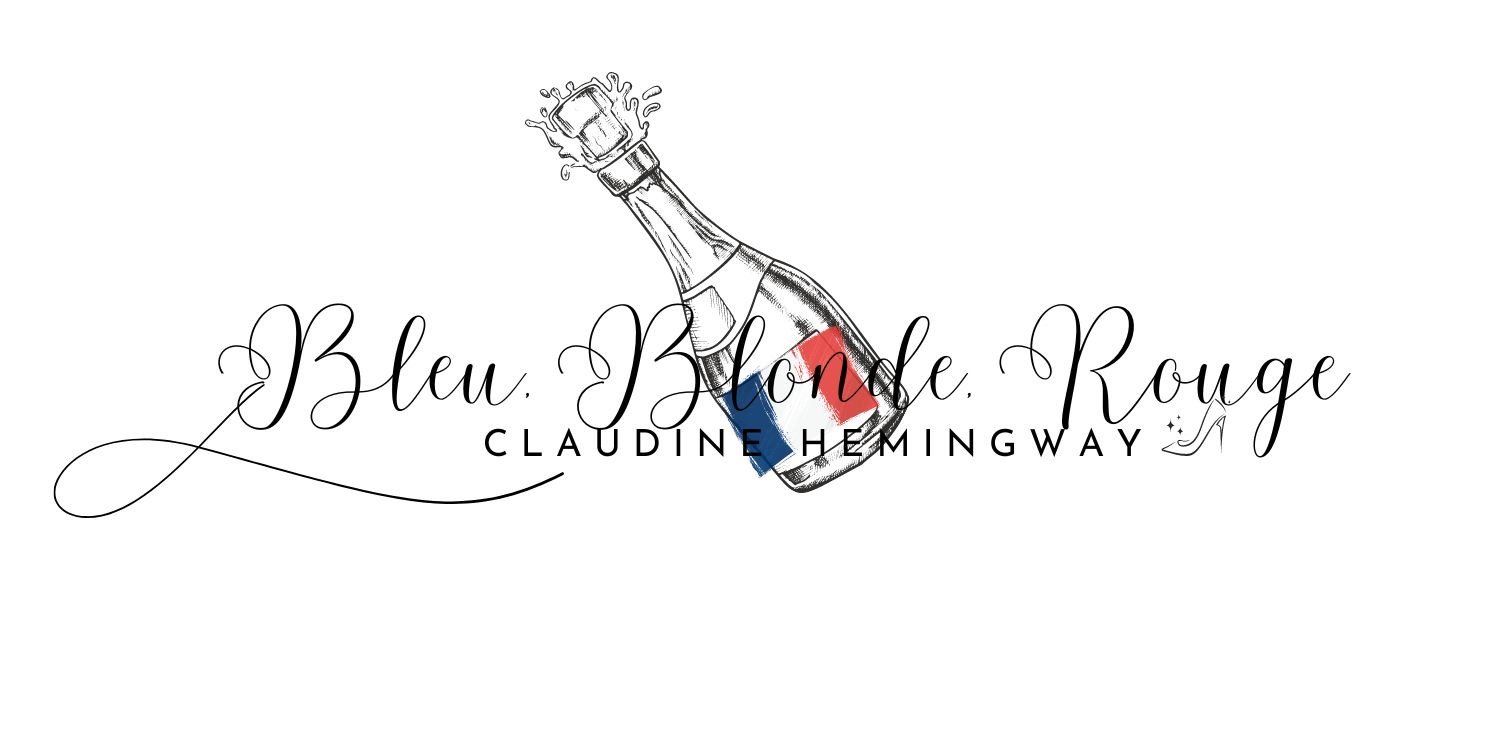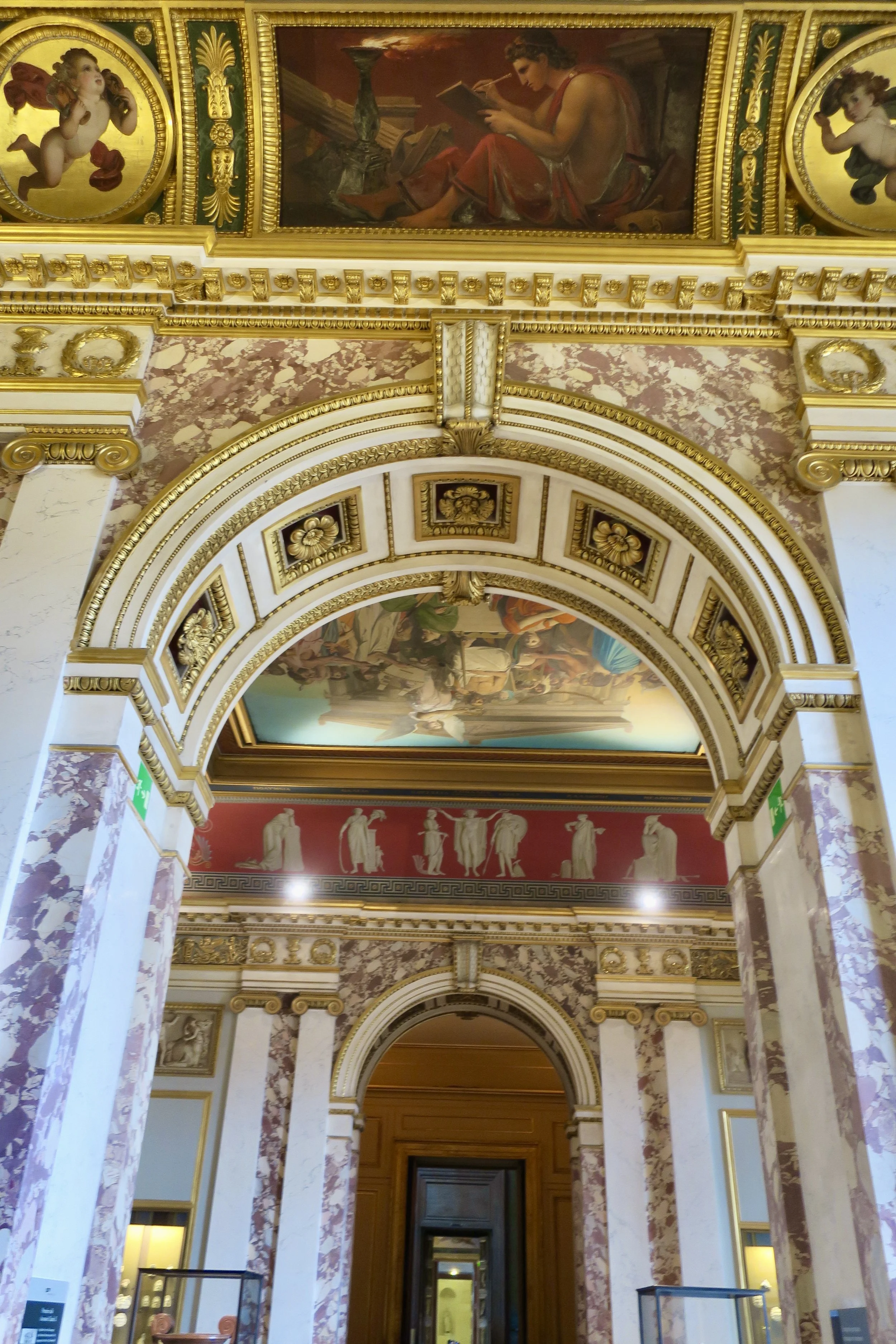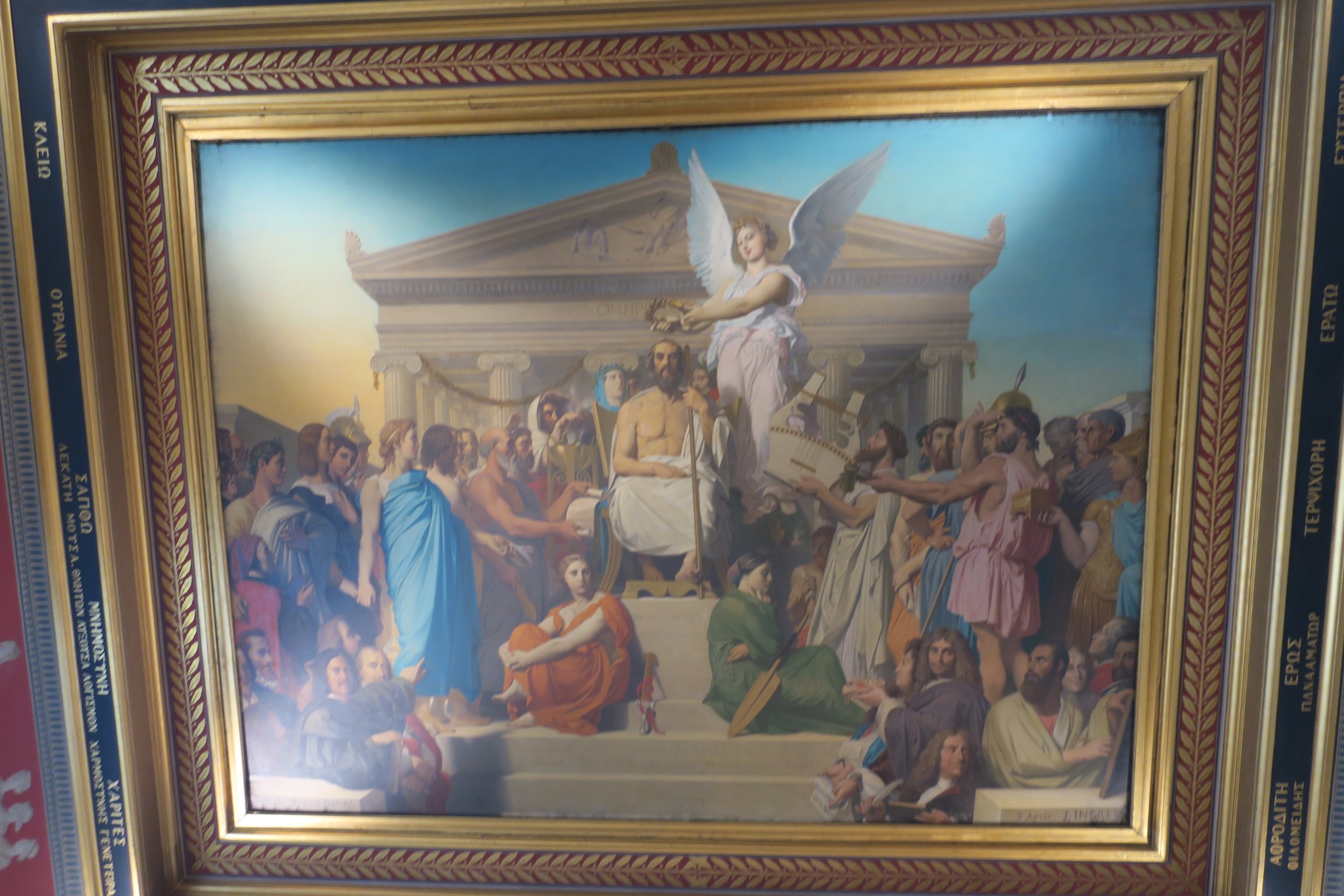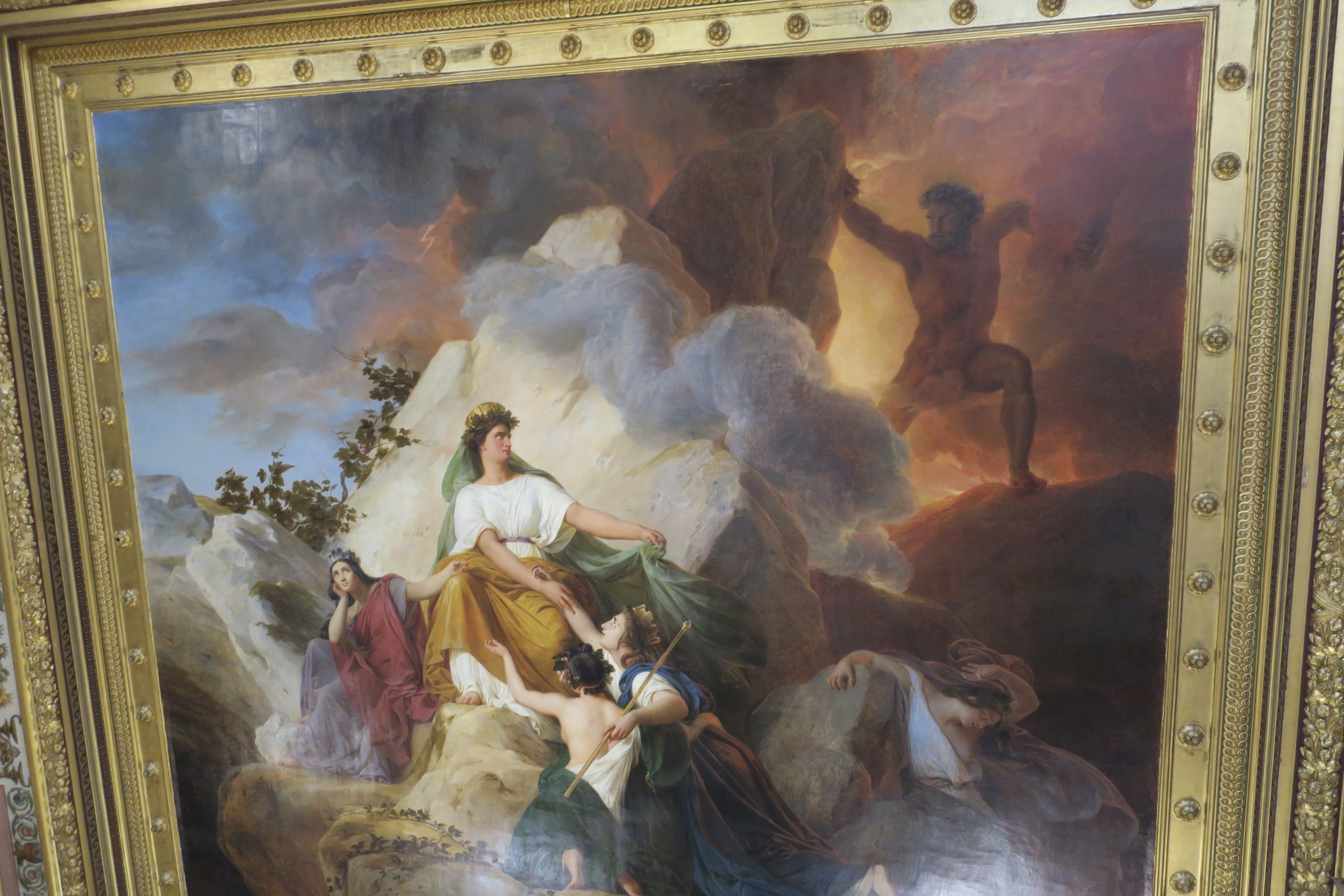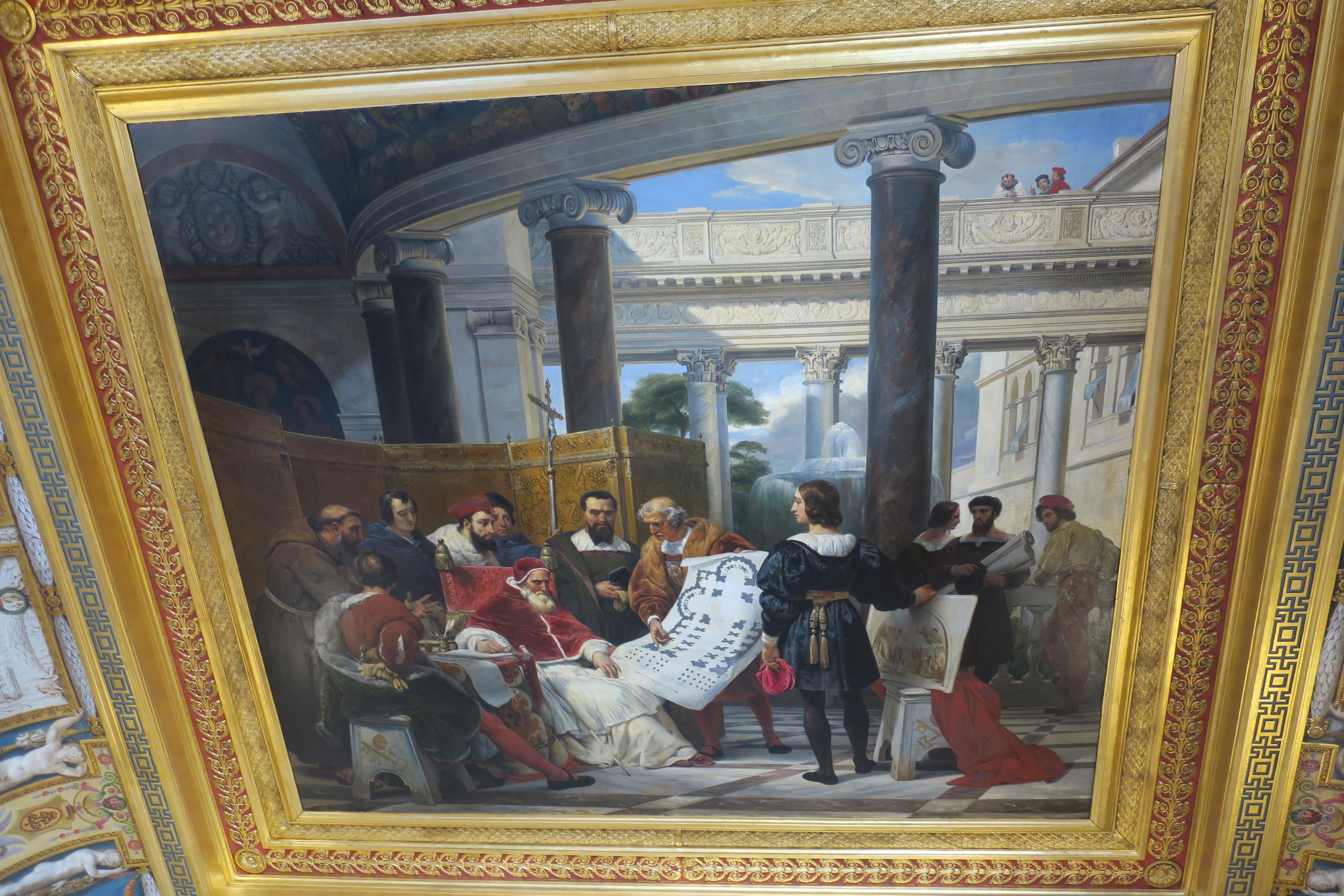Charles X, the second to last king of France wanted to leave his mark on the Louvre like all the kings before him. A lover of Roman and Egyptian antiquities, he sent Jean-Francois Champollian to Egypt to purchase the collection of Henri Salt. Salt’s collection of more than 4,000 pieces was just the beginning. Adding the Edme-Antoine Durand collection of more than 2500 Roman, Egyptian and medieval items and also the collection of Drovetti. Champollian would become the first curator of the antiquities department, after he deciphered the Rosetta Stone, of course.
These rooms once served as the winter apartments of Anne d’Autriche and were renovated under Napoleon Bonaparte by Pierrre Francois Fontaine. From 1819 to 1826 it was the salon and studios of many of the greatest living artists at the time. In 1826 it would become the shrine for the antiquities collected under Charles X. The first four rooms of the Musée Charles X opened on December 15, 1827 showcasing Homer, Pompeii and Herculaneum on the ceilings.
The rooms are located in the Sully wing, on the first floor on the southern side closest to the Seine. To reach the rooms, enter the Denon Wing and head towards the Winged Victory of Samothrace. Please stop and enjoy this beautiful treasure and when finished head up the few steps to the left of her and then right. You will pass through a few rooms before you reach the rooms of the Musée Charles X. On the Louvre map you can pick up under the pyramid; it is on the 1st floor and in rooms 649 to 641.
Premier Salle
Ceiling by Jean-Aguste Dominique Ingres
L’Apothéose d’ Homère, painted from 1826 to 1827. Ingres was given one hour to come up with his idea for the painting. He based it on Raphael’s painting Parnassas, but with a bit of a stiffer look. Homer is seen in the center being crowned by Victory and at his feet the allegories of his two biggest works. Odyssey in green holding an oar and Iliad in red holding a sword.
The painting shows many of the greats including Raphael being led by an allegory in blue, Dante and Virgil and Aesop. On the lower part of the painting the more modern artists of the time of Louis XIV include Jean de la Fontaine, Mozart, Shakespear, Poussin, Moliere, Racine and Cornelle. In 1855 the painting was replaced with a copy by the Balze brothers. The original can be seen in the Salle Daru, the beautiful red room in the Denon wing.
In the arches the muses and allegories of the seven cities that claim the birth of Homer and Apollo against the red background. And in the grisailles Nicolas Gosse and August Vichon are eight scenes from Homer’s epic tales.
Deuxieme Salle
Ceiling by Francois-Joseph Heim
Vesuve Recevant de Jupiter le feu qui doit consumer Herculanum
Vesuvius receives fire from Jupiter which is to consume the cities of Pompeii, Herculaneum and Stabiae. Vesuvius is seen rising from a crater as he is given the destructive fire from Jupiter. In the lower left three women representing the three cities destroyed by the eruption. Minerva in her signature helmet tries to interfere and stop the exchange.
In the arches Heim painted six scenes, four of which show the destruction by the eruption and the other two of Piny the Elder’s death and Piny the Younger writing his letters. The medallions show the genies with works of art by Nicolas Goss and Auguste Vinchon.
Troisieme Salle
Ceiling by Charles Meyner
Les Nymphes de Parthénope emportant leurs penates sur les bords de la Seine.
Nymphes of Naples, the ancient Parthenope brought Pompeiian objects to Paris.
The pediment of the Percier Colonnade Perrault, the eastern edge of the Louvre can be seen near the bottom of the painting.
The arches are also by Meyner depict the life in Pompeii before the eruption, a little more PG rated then some of the original views. Nicolas Gosse and Auguste Vinchon painted the grisailles below of ancient life in Pompeii.
Quatrieme Salle
Ceiling by Francois-Edouard Picot
Cybèle protege contre le Vesuve les villes de Stabies, Herculanum and Resina.
Cybèle protects against Vesuvius the cities of Stabies, Herculaneum and Resina. This painting replaced the original ceiling that was dedicated to Francois I accepting the gifts of Italy which was moved to the Gallery Campana on the other side of the Musée Charles X. Picot’s painting is rather dark and gives a sense of dread. Picot also painted the arches of the cities destroyed by the eruption.
The grisailles by Alexandre-Evariste Fragonard represent the genies of science, industruty, arts, history and arms.
Salle des Colonnes
Separating the first and second part of the Musée Charles X is the beautiful room first created by Louis Le Vau under Louis XIV. It was the Sun King's addition to the Palais du Louvre that he would begin but never finish. Completed under Napoleon and given an update it would briefly serve as the Exposition of Industrial Products before it was turned into a makeshift chapel for the son of Charles X. The Duc de Berry was killed just outside of the Opera Garnier and from February 17 to 22, 1820 it became the site for devotion to his beloved son.
In 1824 work continued and in 1826 Antoine-Jean Gros painted this beautiful ceiling. Made up of three separate sections on the ceiling, in the center is La Veritable Gloire, based on virtue and is surrounded by a garland with the names of many of the great military leaders, artists and writers on the ribbon. On the left is Mars Listening to Moderation and on the right, Time Elevates Truth to the Throne of Reason.
Surrounding the room is also six rectangles of the illustrious patrons. Each of the busts can be seen with scrolls and the names of their biggest artists and writers of their period. Augustus with Virgil and Horace; Leon X with Raphael and Michelangelo; Pericles with Homere, Socratice and Artistole. Francois I with De Vinci and Montaigne; Louis XIV with Le Brun, Molier, Le Sueur and Fontaine and last but not least Charles X with Malesherbes and Delille.
Sixeme Salle
Ceiling by Edouard Picot
L’Etude et le Génie devoilent l’antique Egypte à la Grèce.
Study and Genius unveil ancient Egypt to Greece. Egypt is seen seated and surrounded by antiquities as Mercury/Hermes guides the genie.
Picot painted the arches as well with the beautiful garland again the Pompeii red background inspired by the Villa Albani Torolina in Rome. The grisailles by Gosse and Vinchon represent the birth of the arts.
Septieme Salle
Ceiling by Alexandre-Denis Abel de Pujol
L’Egypt sauvée par Joseph, Egypt saved by Joseph.
Joseph had saved the people of Egypt many times by providing food and even saving them from slavery to the Pharoh.
The arches are trompe l’oeil imitation bronzes of the life of Joseph each separated by the depictions of the Nile flood and couples with garland. The grisailles by Pujol of the daily life of Egyptians
Huitieme Salle
Ceiling by Horace Vernet
Jules II ordonnant les travaux du Vatican et de Saint Pierre, entourne de Bramante, Michel-Ange et Raphael
Jules II ordering the works of the Vatican and Saint Peter, surrounded by Bramante, Michelangelo and Raphae
Michelangelo later altered the plan going with the Greek cross form for the Baroque Renaissance design. Below are medallions of each of the Vatican proposed artists and
Abel de Pujol painted the grisailles with fourteen artists and writers of the Renaissance.
Neuvieme Salle
Ceiling by Antoine-Jean Gros
Le Genie de la France anime les arts protege l’Humanite
The genie of France animated the arts protecting humanity
France is seated on a throne with the horns of plenty at her feet while genies fly above representing the arts. A genie in the sky with his bleu, blanc, rouge plumes holds the shield of Louis-Philippe and Victory is coming out of the clouds with a laurel wreath. This painting replaces a previous work depicting Charles X giving the gift of the museum. The painting is now at Versailles.
